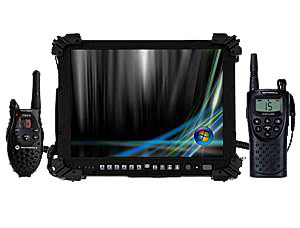One of General Stanley McChrystal’s accomplishments as coalition commander in Afghanistan was the genesis of the Afghan Mission Network (AMN),a meshing of the communication links and data feeds used by International Security Assistance Force (ISAF). The numbers are daunting. 50,000 users from 40 countries of the ISF use something like 30 separate networks, including United Kingdom’s Overtask, Canada’s Land Command Support System, and the American Secret Internet Protocol Router Network (SIPRNET). At least 165 applications (including 13 from NATO) and the data that populated those applications were moved from national networks to the shared one.
However, as Wired reported, McChrystal thinks the technical problems of net-centric warfare are relatively minor compared to the human factors. In a speech to the Network-Centric Warfare conference, McChrystal said that “by far the hardest part” was creating the appropriate “culture.”
The failure to alter our “culture” about intelligence and communications has led not only to dangerous situations, but absurd ones as well. By law, SIPRNET is only available to US armed forces. As a result, two-star British general Nick Carter, commander of Regional Command–South was unable to access information that was available to thousands of the American troops under his authority. Even McChrystal had trouble getting critical data from intelligence agencies.
SIPRNET will not be replaced by AMN. Instead, AMN will create a Common Operational Picture (COP) for joint warfighting missions such as battlespace management, fires, ISR, counter-IED and force protection. NATO C3 Agency project manager Wilco Dissevelt told Digital-Battlespace “…NATO will use one tool and the US will use another tool, but they will be able to see the same information on both. Our job is to ensure that the green dot means the same thing on both systems.”
The COP approach begs the question: what kind of change is the AMN? Is it an automobile or a computer? When cars first replaced horses, designers were reluctant to give up centuries old customs. As a result, some early cars reputedly had holders for buggy whips. On the other hand, computers were supposed to usher in the age of the “paperless” office, a phenomenon that is still rare, if not totally non-existent. If the AMN presents an identical COP as SIPRNET, wouldn’t that make SIPRNET as anachronistic as buggy whips? If SIPRNET still has unique applications and information, is the Common Operating Picture truly all that common? Maybe, even with a true COP, SIPRNET will still have uses, as paper still does in a modern office.
The cultural issues surrounding AMN highlight not only the human factors, but the importance of the humans themselves. Personnel who collect intelligence and relay communications can no longer be considered secondary actors in this conflict. Their actions have profound effects at virtually every strategic and tactical level. As Brig. Gen. Brian Donahue, director of command, control, computers and communications systems at the Army’s Central Command told Signal magazine, “If you think a signal commander or signal officer is not a warfighter, you’ve never been to Afghanistan.”

